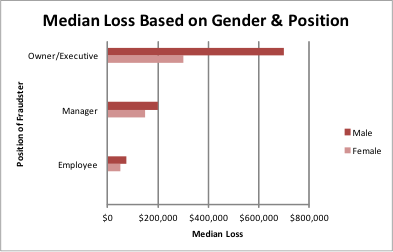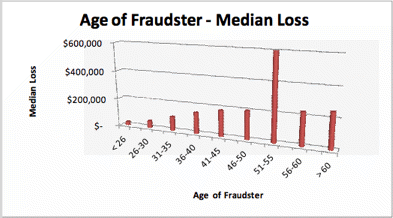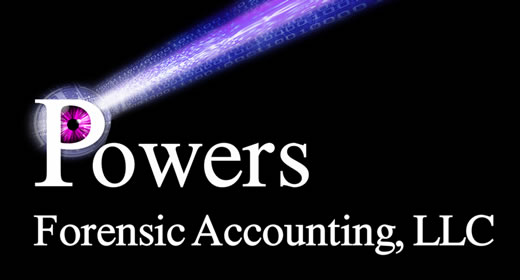Weasels at Work: What Do They Look Like?
By Chrissie A. Powers, CPA/CFF, CFE, CVA
A fraudster (aka a Weasel) uses their occupation for unjust personal enrichment through the deliberate misuse or misapplication of the employing organization's resources or assets. I am often asked about the typical fraudster's demographics and characteristics. The Association of Certified Fraud Examiners ("ACFE") has been collecting this data over the last ten years.1
Gender and Position
In the most recent study, 2/3rd of all fraud cases reported that the fraudster's gender was male. The male fraudster generally causes losses that are more than twice as high as the losses caused by female fraudsters. This disparity between the genders isn't based on the males occupying higher levels of authority than females. The male fraudster caused higher losses at every position level. A male Owner/Executive had a median loss of $699,000. See graph below.

12012 Global Fraud Study – Report to the Nations on Occupational Fraud and Abuse.
Age
The average age of a fraudster is between 36 to 45 years old. The fraud loss tends to increase with the age of the fraudster. The average loss of $600,000 is for fraudsters between the ages of 51 to 55. A lose of this magnitude for a small business could be devastating.

Tenure
The fraudster's tenure has a direct relation with the loss as well. The longer a fraudster has worked for the organization, the greater the trust, which means less scrutiny over their actions and position. The fraudster has gained a better understanding of the internal controls, allowing them greater success in committing their fraudulent scheme. Therefore, the fraudster is able to execute their scheme causing a greater loss.
| Tenure of Fraudster | Median Loss |
| Less than one year | $25,000 |
| One to five years | $100,000 |
| Six to ten years | $200,00 |
| More than ten years | $229,000 |
Behavioral Traits
The average fraud scheme lasts 24 months before being discovered. Often times, the fraudster displays behavioral traits connected with the stress of being discovered that are red flags. Here are just a few of the top behavioral red flags of fraudsters:
- Living Beyond Their Means
- Financial Difficulties
- Unusually Close Relationship with Vendors/Customers
- Control Issues, Unwillingness to Share Duties
- Drugs, Gambling, Mistress
- Refuses to Take Vacation
The clever weasel is a long, slender animal with beady eyes that is known for being sly and deceptively misleading. Consider these characteristics to evaluate your office colleagues. Do you believe you have a weasel at your office? If you suspect a weasel or would like to discuss your fraud concerns, don't hesitate to contact us at 614-745-5192.

Chrissie A. Powers, CPA/CFF, CFE, CVA
© 2025 Powers Forensic Accounting, LLC All Rights Reserved.
Site Composition by Expert Communication, Inc.
Website by Lemon Dog Project
